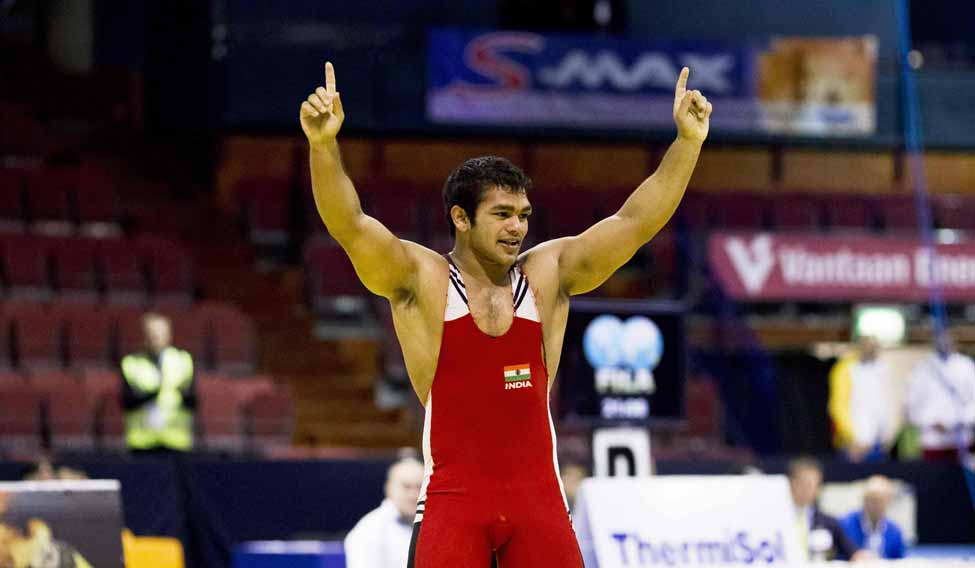The recent instances of doping involving Rio-bound Indian athletes, shot putter Inderjit Singh and wrestler Narsingh Yadav, have shown that India is not far behind in the “Doping Games”, where the Russians reign supreme now.
Doping is an age old phenomenon in sports. And, the unpleasant truth is that as long as sports exist, doping will also be there. In recent times, the doping menace has grown as a monster engulfing all categories of athletes in competitive sports, starting from schools to international games including Olympic champions.
By definition, doping is the use of any substance or method to artificially enhance sports performance. The sports governing bodies do not accept this practice and have formed World Anti Doping Agency in 1999 to contain the menace of doping in sports.
Every sport has its own choice of drug. Many athletes relish doping substances in their breakfast, lunch and dinner. Those who need explosive power and strength like those in weight lifting, sprints, throws, rowing and wrestling use anabolic steroids, which enhances muscle growth. Boxers, weight lifters, judokas and wrestlers, who want to reduce their body weight in order to compete in a selected weight category opt for diuretics. The drug erythropoietin is preferred by endurance athletes like marathon runners and cyclists to increase red blood cells count that enhance the oxygen carrying capacity of the lungs, which in return boosts the stamina.
Stimulants have the capacity to delay fatigue and increase concentration and they are the drug of choice for cricketers and footballers.
A fast bowler, who looks to enhance speed and strength to deliver the ball, will go after anabolic steroids. Archers or shooters will go in search of beta blockers to steady their hands by decreasing tremors by lowering their heart beats. For pain relief and to get into euphoria there are narcotic analgesics. No wonder that with such a grand choice of drugs available for performance enhancement, athletes may find it too irresistible to not jump into the doping bandwagon.
What's more interesting is, even the most commonly prescribed medicines like atenolol (used for hypertension) Broncho- dialators like Asthalin (for Asthma), Insulin (for diabetes) , Corticosteroid (anti- inflammatory agent) are classified as performance enhancing substances under WADA Code and banned for athletes.
In their quest for gold and glory, sportspersons are ready to experiment with drugs for performance enhancement discarding the serious ill effects of such drugs on their health.
Anabolic steroids can cause diabetes, liver cancer, damage the heart and kidneys and also damage the reproductive organs of male and female. The drug can also cause aggressive behaviour.
Stimulants can cause irregular heartbeats and cardiac arrest and diuretics can cause dehydration leading to sudden death.
A costly affair
Drug testing in sports, contrary to what people believe, is a costly affair. It cost Rs 20,000 per test. Where will the money come from for carrying out tests in large numbers? As a matter of fact, every athlete in a competition cannot be subjected to doping tests.
The tests are carried out normally in urine samples. For testing erythropoietin and growth hormone blood sample is also collected from the athlete. The sample collection has to be carried out as per WADA guidelines and in India, it is the National Anti Doping Agency (NADA), which is an extended arm of WADA. The sample analysis has to be done in a WADA accredited laboratory. There are 33 such laboratories across the world and one of them is the National Drug Testing Laboratory (NDTL) in New Delhi. The test results are given within 48 hours or 10 days depending on the charges levied for testing.
Once consumed, the washout time of the drug from the body varies from drug to drug. Most of the commonly used drugs get washed out within 24-48 hours, whereas drugs like Anabolic steroids take more time to get washed out of the system and the same could be detected in urine/blood samples even after weeks or months. Precisely for this reason the athletes are subjected to doping tests, before, during and after competitions, any day, anywhere and at any time without any advanced notice. Refusal to undergo the test when called for, will be taken as a positive test and sanctions will follow.
The athletes who fail doping tests, qualify for sanctions from WADA. Depending on the type of drug consumed, the sanctions will vary from monetary fine, warning, reprimand or ban from sports for a period lasting from days or months to four years.
An athlete could face a ban for 8 years or a life ban, if he or she caught for doping offence for a second time.
That is the fate now awaiting our Olympic medal hopefuls Singh and Yadav, who have been tested positive for the banned anabolic steroids.
(Dr P.S.M.Chandran is the President, Indian Federation of Sports Medicine and former Director (Sports Medicine) Sports Authority of India.)




